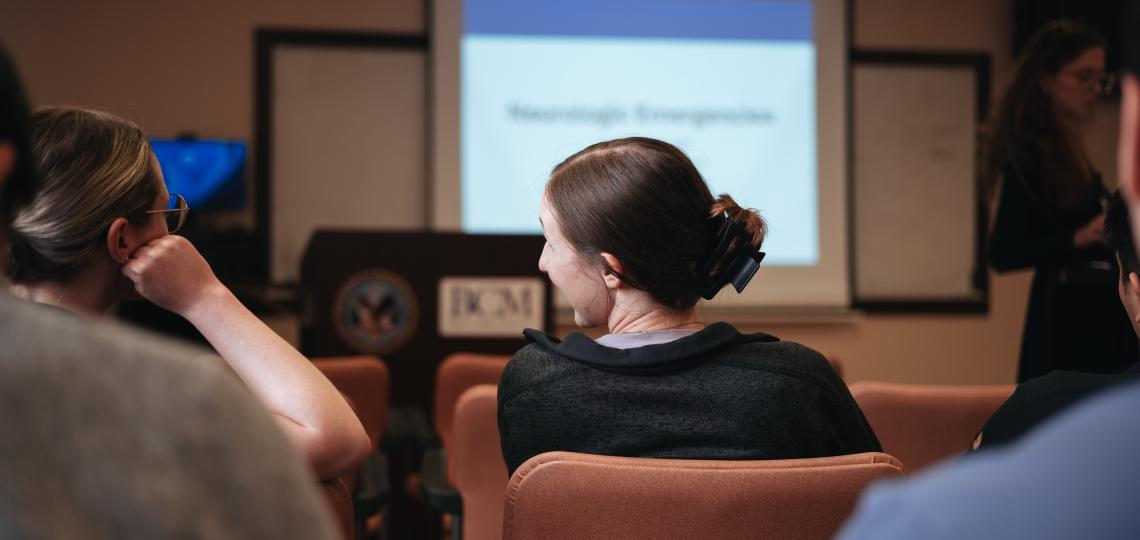
Under the supervision and mentorship of expert faculty, residents experience diverse clinical training in our four unique hospitals: Ben Taub General Hospital (Houston’s county hospital), the Michael E. DeBakey VA Medical Center (a flagship VA hospital), Baylor-St. Luke's Medical Center, and MD Anderson Cancer Center. Residents have continuity clinic at Smith Clinic (part of the county safety net system affiliated with Ben Taub Hospital), the VA, and the Baylor McNair Campus. They also rotate through ambulatory experiences at the hospitals and clinics.
Sample Yearly Rotation Schedule for Categorical Residents
PGY 1
- Wards (BT, VA, and/or MDACC): 16 weeks
- Ambulatory (primary care or subspecialty): 8-12 weeks
- Inpatient subspecialty electives: 12-16 weeks
- Night Float: 4 weeks
- MICU: 4 weeks
- CCU: 4 weeks
- ER: 4 weeks
- Vacation: 3 weeks
PGY 2
- Inpatient general medicine (BT, VA, MDACC, or BSLMC): 12 weeks (including some night float admitting weeks)
- Ambulatory (primary care or subspecialty): 12-16 weeks
- Inpatient subspecialty: 16 weeks
- ICU Night Float: 2 weeks
- Geriatrics (either PGY2 or PGY3): 4 weeks
- Neurology (either PGY2 or PGY3): 4 weeks
- Vacation: 3 weeks + 4-day personal holiday
PGY 3
- Inpatient general medicine (BT, VA, MDACC, or BSLMC): 8-12 weeks (including some night float admitting weeks)
- Ambulatory (primary care or subspecialty): 12-16 weeks
- Inpatient subspecialty: 16 weeks
- MICU: 8 weeks
- General Medicine Consult: 4 weeks
- Geriatrics (either PGY2 or PGY3): 4 weeks
- Neurology (either PGY2 or PGY3): 4 weeks
- Vacation: 3 weeks + 4-day personal holiday
Based on feedback from current and prior residents, we have made the following changes to our curriculum in recent years:
- Restructured intern year experiences to balance inpatient acute care rotations with more subspecialty and outpatient rotations
- 24-hour calls removed and replaced with a night float system instead
Schedule
Our schedule system is the Baylor 4+4, which consists of thirteen 4-week blocks during the academic year. The blocks alternate between “blue” and “gold” blocks; blue blocks primarily consist of wards and ICU; gold blocks are typically lighter rotations consisting of 4-week subspecialty rotations or 2-week ambulatory rotations, with continuity clinics occurring on gold blocks.
Resident schedules are available and updated in real time on Qgenda, which is easily accessible online or on the Qgenda app.








